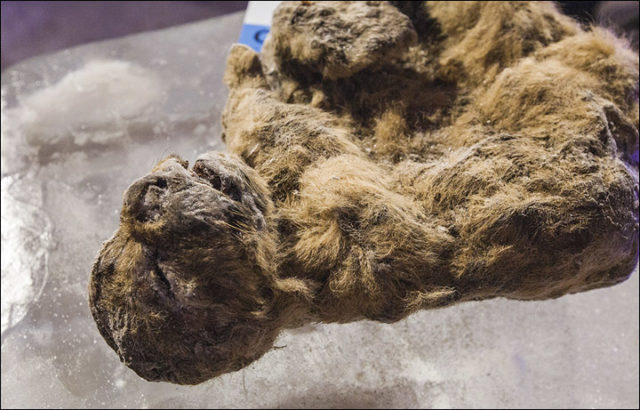Hailed by the scientists as the most ‘sensational’ find of its kind, two amazingly-preserved ancient Siberian cubs called Dina and Uyan are causing a stir of excitement among archaeologists and palaeontologists alike.
World media was spell bounded when the bodies of the prehistoric beasts were put on display in Yakutsk, in a permafrost cave. When they first roamed the Siberian icy bed, the conditions were far more harsh and colder than a permafrost cave.

The cubs size of a modern plump cat, were displayed on a single giant ice slab. Despite the fact that the permafrost contributed a great deal in preserving the bodies of these Siberian cubs for more than 12,000 years, however, the researchers are speculating that these cubs could even be more ancient.
The next stage in the pipeline for the scientists is to carry out elaborate tests on the remains in order to determine the precise age and other genetic information.
The head of the Mammoth Fauna Studies Department at the yakutian Academy of sciences Dr. Albert Protopopov revealed that the astonishing discovery was made near the bank of Uyandina Riverin Abyisk District.
The cubs were found accidently by some workers, buried under the soil by the bank; the discovery was made possible as a result of the lowering water levels in the River.
According to the workers who first came across the remains, the river water goes to a higher level during summer and later when it subsided a number of landslides left some cracks on the bank.
In one of the banks says Yakov Androsov who was one of the first workers at the site, they saw something like an ice lens with some unknown pieces inside. Out of curiosity workers started carefully probing the find and saw frozen cubs’ bodies inside the lens.

Dr. Protopopov said that the discovery was made along the banks of the river that flows below the Arctic Circle and is some 1045 kilometres north east of the capital Yakutsk. He added that the findings are no less then sensational and quite unique in characteristics.
The cubs found at the site are almost perfectly preserved with all body parts such as fur, soft tissues, ears, and even the whiskers; the most complete remains of any species from that time period.
Answering the question of potential cloning attempts on the DNA of the cave lions found, Dr. Protopopov emphasized that at this stage any talk of cloning or DNA manipulation will be highly premature.
The fact that scientists currently are working on a project of cloning the woolly mammoths also found in the region, makes the cubs a potential subject of any such attempts in the near future.
